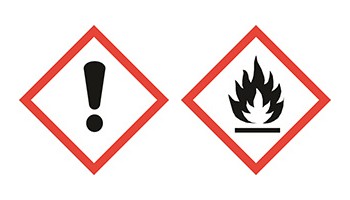Declutter Your Bathroom
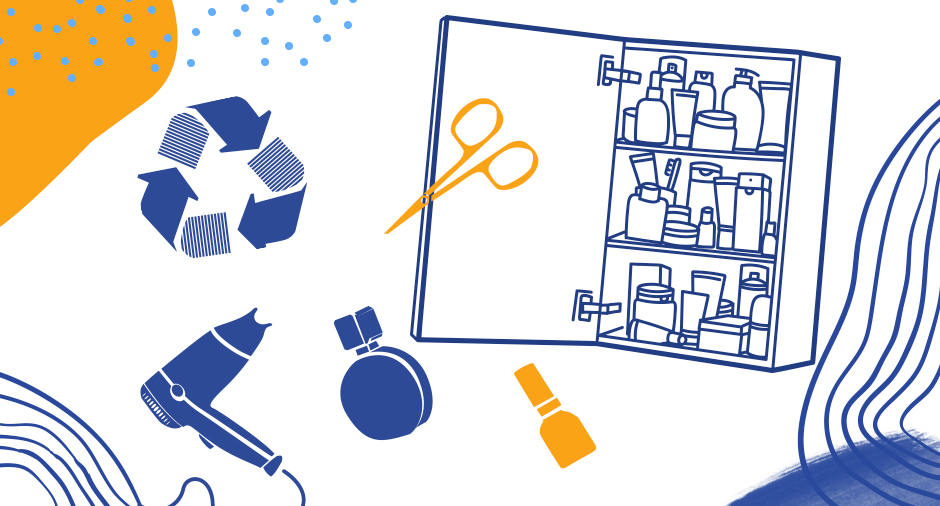
Declutter Your Bathroom
Over time, many kinds of cosmetics and different packages tend to build up in the bathroom cabinet. Go through your bathroom cabinets and recycle unnecessary cosmetics and packages with the help of these instructions we have gathered.
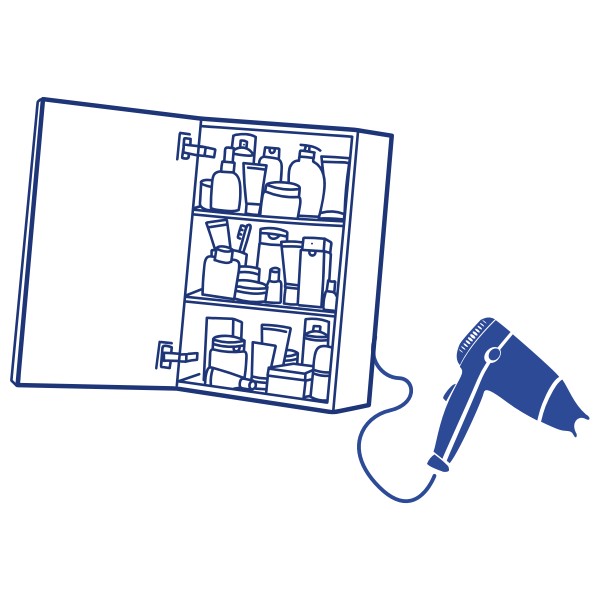
How to recycle cosmetics found in the bathroom
Sort trash and waste from your bathroom cabinets correctly: plastic packaging that is empty, dry and rinsed with cold water into a recycling bin for plastic, clean cardboard packaging into a recycling bin for cardboard etc. As a rule of thumb, packaging waste should be clean enough to be stored at home for a length of time.
Most municipalities collect burnable waste or energy waste that most daily household waste can be sorted into, such as dirty plastic and cardboard packaging.
Always try to primarily use up the products. And remember that you can also recycle by giving things to your friends! For example, if a hair care product you bought does not suit your hair, you can ask if your friend would be able to use the product.
Skincare and hygiene products
Deodorants: Sort a deodorant that is in a plastic packaging primarily into plastic waste, see section Plastic packaging.
Aerosol deodorant in a metal can goes into metal waste. Make sure that the metal packaging is empty, which means that it does not slosh or rattle (see section Aerosols). If there is still some product left in the metallic can, it should be sorted into hazardous waste. Remove plastic parts that are removable by hand, such as plastic domes or caps, and sort them into plastic waste. Empty roll-on-packaging made of glass is usually not suitable for glass recycling because it’s often made of laminated glass or opal glass. Sort it into energy waste or mixed waste.
A toothbrush is either mixed waste or burnable waste and it should be sorted into your own waste bin.
A broken electric toothbrush, see section Bathroom electronics.
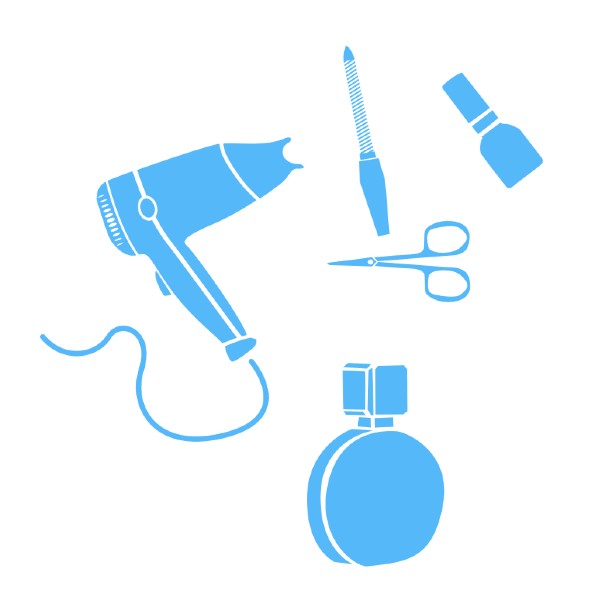
Moisturising creams as such are mixed waste. An empty plastic packaging is primarily plastic waste, see section Plastic packaging. A glass packaging can be recycled if the material is suitable for recycling. Often the glass used in these is laminated glass, which is not suited for glass recycling but instead should be sorted into burnable waste or mixed waste.
Nail polishes and nail polish removers should be sorted into hazardous waste. You can put an empty nail polish remover bottle into plastic waste.
Broken metal nail clippers should be sorted into metal waste.
A nail file with sandpaper should be sorted into mixed waste. Metal nail files should be sorted into metal waste.
Cotton buds and cotton wool should be sorted into energy waste or alternatively into mixed waste. Do not flush cotton buds.

Hair care products
For example shampoos, conditioners and sprays (NB: not aerosols)
An empty plastic packaging is primarily plastic waste, see section Plastic packaging. Aerosols in pressurised containers are hazardous waste, see section Aerosols.
Contents of your make-up bag
Lipsticks should be sorted into burnable waste or mixed waste.
Make-up containers should be sorted into burnable waste or mixed waste. However, if a foundation tube is all used up and rinsing with cold water leaves it clean, it should be sorted into plastic waste.
Empty plastic eyeshadow palettes can be sorted into plastic waste including their metal parts if the plastic makes up over 50% of the packaging.
Make-up pencils, sponges and brushes should be sorted into burnable waste or mixed waste.
Empty, mirrorless compact powders and their lids should be sorted into plastic waste. Compact powders with mirrors should be sorted into burnable waste or mixed waste.
Tweezers should be sorted according to their main (over 50%) material into either metal or plastic waste.
A metal eyelash curler should be sorted into metal waste. A plastic eyelash curler should be sorted into burnable waste or mixed waste.
Aerosols
For example hair sprays, hair mousses, deodorants etc. aerosol sprays
Make sure that the can is empty: Shake the can. The can is empty if you cannot hear sloshing from inside the can, wheezing when pressing the nozzle or when there is no product or propellant gas coming out. Remove plastic parts that are removable by hand, such as plastic domes or caps, and sort them into plastic waste. Empty cans should be sorted into small metal waste either at your own recycling point or at an eco point’s recycling point.
If there is still some product left, the can should be sorted into hazardous waste.
Household detergents and cleaning products
Always try to use up the product. However, if there is still some product left, pay attention to package markings. Some of cleansers and detergents can be classified as hazardous waste and then they should be sorted into hazardous waste. More information about package markings can be found on Tukes’ website.
Empty plastic disinfectant packages should be sorted into plastic waste, see section Plastic packaging. If there is still some product left, it is considered hazardous waste and should be sorted into hazardous waste.
Empty detergent packages should be sorted into plastic waste, see section Plastic packaging.
An empty cardboard laundry detergent packaging should be sorted into carton waste. An empty plastic packaging is primarily plastic waste, see section Plastic packaging. If there is still some product left, sort the packaging into burnable waste or mixed waste. Always try to use up the product.
A plastic laundry detergent dosing ball that comes with the laundry detergent counts as part of the packaging, so it can be sorted into plastic waste or alternatively into burnable waste or mixed waste. If the dosing ball has been bought separately, it should be sorted into burnable waste or mixed waste.
Carton packaging
Carton packaging should primarily be sorted into carton waste and it can often be burned as well.
Bathroom electronics
An old and broken hairdryer and other electric hair styling tools, and for example a broken electric toothbrush, are classified as electronic waste. These are accepted by companies that sell electronic devices. You can also take these to your district’s electronic waste collection points. You can see the collection points and places that accept electronic waste here: www.kierratys.info
Glass packaging
Remove caps and lids, tags can stay on. Clear glass bottles can be put into glass waste. Often the glass used in cosmetic packaging is laminated glass or opal glass, which is not suited for glass recycling but instead should be sorted into burnable waste or mixed waste. You can recognise opal glass from its matt and milky white appearance. It is often also called frosted glass.
NB: Mirrors should not be sorted into glass waste but rather be sorted into burnable waste or mixed waste.
Plastic packaging
Conditioners, shampoos, lotions etc. and other plastic packaging.
Plastic packaging should be sorted when empty and rinsed with cold water into plastic waste if over 50% of its material is plastic. If the package is still dirty after rinsing, it should be sorted into burnable waste or mixed waste.
Remove caps, lids and other loose parts from the packages and sort them separately into the bin because the parts are often made of different kinds of plastic. Do not stack empty plastic packages because it complicates their identification and they might be placed into the wrong category in the recycling process. Plastic packaging can be sorted into plastic waste in a plastic bag.
Packages that have a numerical symbol (01, 02, 04, 05, 06 or 07) indicating their plastic type can be sorted into plastic waste. PVC plastic (symbol 03) is not suitable to recycle as plastic waste. Numbering in packages is not mandatory, so primarily all plastic packaging can be sorted into plastic waste.
If it is not possible to sort plastic packages into plastic waste and your district collects burnable waste, plastic cosmetic containers can be sorted into burnable waste.
Other products
Perfumes, aftershaves
Perfumes and aftershaves containing alcohol are hazardous waste and do not belong in mixed waste. Empty glass bottles should not be put in glass recycling because they are made of laminated or opal glass – sort empty bottles into burnable waste or mixed waste. Do not pour the remainder of the product in the drain.
Medicine
Empty pharmaceutical carton packaging can be put into carton waste, empty plastic packaging into plastic waste and metal packaging into metal waste.
Regarding unused medicine or packages containing medicine residues, you should follow the instructions of your district’s waste management. Usually your local pharmacy will accept the medicine and their packages. Unused medicine should never be emptied in the drain.
Mirrors
Broken mirrors should be sorted into burnable waste or mixed waste.
Old eyeglasses
Most opticians accept old glasses for recycling. They are also suitable to be sorted into mixed waste.
Recycling codes
Plastic packages often have a recycling code (1–7), which is a combination of a letter and a number inside a triangle. The code is not mandatory and if you cannot find it, you can still sort the package into plastic waste.
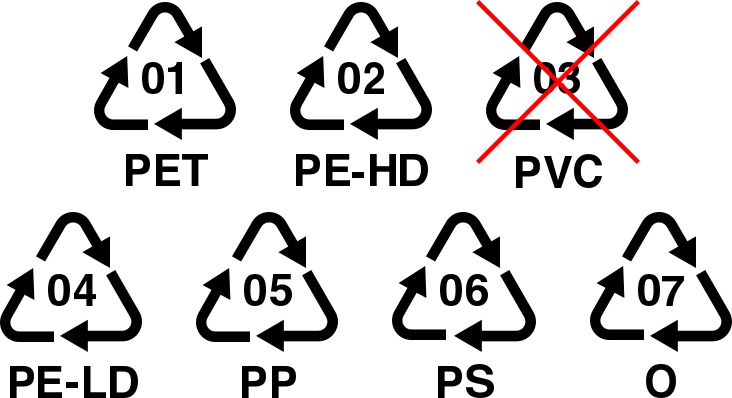
All other types of plastic are suitable for plastic recycling except for PVC plastic, which is marked with the number 03. PVC is not often used in packages, but it can be seen in the packages of imported tools and toys. More information about different plastic types and their recycling can be found, for example, from the Finnish Packaging Recycling’s website.
Shelf-life symbols
This symbol indicates the shelf-life of a product after it has been opened if the product has a shelf-life of over 30 months. This is called a PAO symbol (Period After Opening). The shelf-life period is indicated on top of the opened package either in months or in years. “Month” might be shortened as the letter “M”. 
Some chemicals have warning symbols required by law about the hazardousness of the product. This is why chemicals should be stored in their original packages. Learn more about warning symbols at Tukes’ website.
Warning symbols
Some chemicals have warning symbols required by law about the hazardousness of the product. This is why chemicals should be stored in their original packages. Learn more about warning symbols at Tukes’ website.
